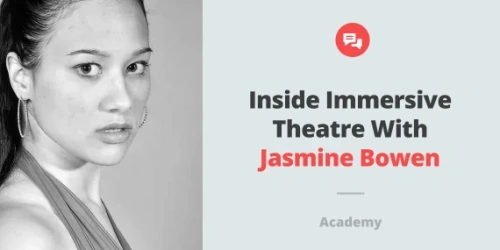- The Best Background for Self-tapes.
- What Impact on the Right Background Color for Self-tape?
- What Colors Should You Wear for Self-tapes?
- What Colors to Avoid for Self-tapes?
When it comes to selecting a background for your self-tape, you have to be picky and not just select the first one you see. The background has to go in hand with other aspects of your performance, including costumes, skin tone, etc.
However, it would help if you considered that there are times when the background to be used for your self-tape is specified on your casting call. If you find yourself here, it's best to adhere to the guidelines.
The Best Background for Self-tapes
Yet, if no specific background color is required, you should choose from one of the best backgrounds for self-tapes:
Grey Background for Self-tapes
Many professionals recommend grey as a background for self-tapes. This is because it has a neutral color which helps showcase the object in front of it. Thus, it is the most widely used background for self-tapes.
You also have to choose between light grey and dark grey. We recommend using light grey when your skin tone, clothes, and other objects in the foreground are dark. Likewise, we recommend using a dark grey background if your skin tone, clothes, and other things in the foreground are lighter. This will help you stand out as an independent figure apart from the background.
Also Read: How to Become a Wedding Dress Model?
Blue Self-tape Background
An excellent alternative to the grey background is the blue background. This color gives prominence to you, the actor. This is because the blue and neutral color is largely distinct from the average skin tone — even more so if you have a darker skin tone.
Also, the blue background is notable for highlighting the emotion behind the actor's eyes.
White Self-tape Background
Being a neutral color, white allows the actor in front to stand out as a separate entity. This is important because of the fact that you want to be seen—your hand gestures, your head movement, etc. These are, after all, important aspects of expression that are crucial in your line of work.
Another reason white makes an excellent self-tape background is because of the professional atmosphere it brings. It also distributes light evenly and helps balance out any area lacking in your home studio. However, this requires skill and basic know-how in the arts of lighting.
For best results on a white background, it's recommended that you wear dark clothing.

Black Self-tape Background
Contrary to popular opinion, black can make a stunning self-tape background. Just make sure you use a non-reflective material, such as a tarp made from Canvas.
Next, you have to do proper lighting work that showcases you, the show's star. It goes without saying that light-colored clothing goes best with this background, so avoid dark-colored clothes in your self-tape with a black background for optimal results.
Green Background for Self-tapes
We recommend using this to add special effects or make background edits to your self-tape in the post-production stage. Yet, a dark green background can create good contrast and help give you prominence in the self-tape. What is most important is that you place the lighting properly to showcase the actor, not the background.
What Impact on the Right Background Color for Self-tape?
Skin Tone
Your skin tone has to create a perfect mix with your background color. As we discussed earlier, a darker skin tone goes well with a light background color. Likewise, a light skin tone goes well with a dark background.
Genre
What you are auditioning for should also play a part in selecting your background color. While nobody expects you to be a professional editor, it is best that you take some simple details into consideration. For example, a horror self-tape can be shot on a black background, and a self-tape for a job interview or professional setting should be shot on a white background, etc.
You might also be interested in:
Makeup
Your makeup can also have a positive or negative effect on your background. It is just a matter of how you apply it. Overly bright makeup will look terrible on a bright background. This is because it can be distracting and visually unappealing.
Makeup and background combinations can also affect your facial features. Using techniques like contouring appropriately can help enhance the depth perception of your facial structure.
Applying shiny lip gloss and glittery eye shadow can reflect light, causing distractions to the casting director, so only use products that blend with your background.
Clothes
Your outfit can help you stand out from the background. Wear dark clothes for a light background and vice versa. This is because of the laws of contrast. If you wear clothes that do not contrast your background, it might be difficult to know where your clothes end and the background begins.
Don't wear clothes with bright colors or loud fashion; large logos, patterns, or prints might be too distracting and take the casting director's attention away from you.
Also Read: How to Become a Plus-Size Model with No Experience?
You should also wear clothes that match your background in terms of setting. For example, a suit and tie will look good on a white background if you are auditioning for the role of a lawyer in a professional environment.
What Colors Should You Wear for Self-tapes?
- Wear neutral colors: White, Blue, Black, and Grey are some examples of neutral colors. These colors help separate you as a different entity from the background without being distracting.
- Wear colors that contrast with your background: If your background is black, you can wear white clothing, and vice versa.
- Wear colors that complement your skin tone.
What Colors to Avoid for Self-tapes?
- Don't wear bright colors: Lime Green, Electric blue, Turquoise, and Corral are some examples of colors you should avoid in your self-tape. This is because they can be too distracting.
- Don't wear colors that are adjacent to your background: Red clothes on a red background or any other color combination of the sort is a recipe for disaster.
With these tips, your next self-tape is sure to be a masterpiece. Sign up to allcasting.com now to find casting calls where you can apply these suggestions.



